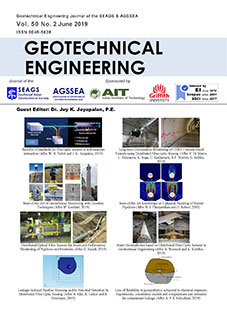Rational Methods of Steel Pipe Design Accounting for Poor Native Soils and Soil Migration
Main Article Content
Abstract
In poor native soils there is always a concern whether sufficient embedment support around the haunch and spring line level exists to prevent over-deflection of steel pipe. Engineers become confused given the two extreme positions on trench width – steel pipe suppliers advocating two pipe diameters while a government agency like U.S. Bureau of Reclamation (USBR) recommending the use of five pipe diameters. Methods from the German ATV A127 or Leonhardt, rely on a ratio of the side fill En’ to the embedment Eb’ and the ratio of the trench width to the outer diameter of the pipe to select site specific trench width. When pipe suppliers quote Marston’s work on rigid concrete pipe from 1913, to make their case that a relatively narrow trench is better in poor native soils even for flexible steel pipe, they introduce the risk of inducing the buyers to ask – has the pipeline industry not seen new developments over the past 100 plus years? This paper reviews the fallacies surrounding various methods on how to cope with poor trench wall conditions and provides a rational method. This paper also covers the phenomenon of soil migration, its significance in buried pipeline design and performance and the adverse consequences if not considered.
Article Details

This work is licensed under a Creative Commons Attribution-NonCommercial-NoDerivatives 4.0 International License.
Copyright © 2019 Association of Geotechnical Societies in Southeast Asia (AGSSEA) - Southeast Asian Geotechnical Society (SEAGS).


